Three Men in a Boat (To Say Nothing of the Dog), published in 1889, is a humorous novel by English writer Jerome K. Jerome, about three friends embarking on a boat ride on the Thames from Kingston to Oxford. The book is known as one of the funniest in the history of English literature.
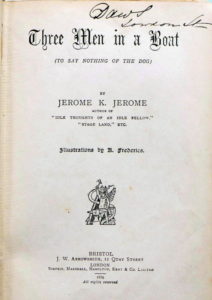
In 2015, The Guardian ranked it No. 25 of The 100 Greatest Novels of All Time, and in 2009, Esquire ranked it No. 2 of the 50 Funniest Books Ever. The story inspired the 1961 German movie “Drei Männer in einem Boot” with Heinz Erhardt, Hans-Joachim Kulenkampff, Walter Giller, Willy Reichert and others.
On September 27th, 2020 and September 19th, 2021, we adapted Jerome K. Jerome’s story in following ways:
First Adaptation: The Boat. Instead of using a Thames skiff boat on the River Thames, we sailed a 100-year-old wooden sail boat on Lake Ammersee southwest of Munich, Germany. The Rambeck shipyard in Starnberg had originally delivered the 10.5-meter National Cruiser, with a 45-square-meter sail and mahogany freeboard, to Berlin under the number P57 in 1920. The P57, nowadays called “Altschwabing”, is beautiful and fast.
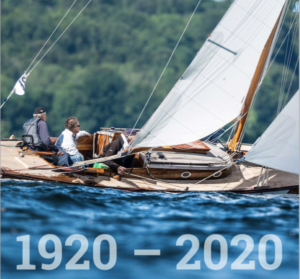
Second Adaptation: The Crew. We replaced George, Harris and Jerome from the original book with Marco, Klaus-Jürgen and Chris, three former colleagues of Siemens TI (Technology and Innovations).
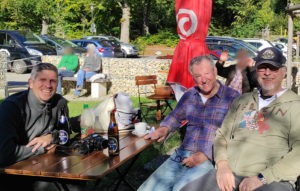
Third Adaptation: The Dog. Having only a camera at hand, we replaced the dog with Bokeh, which does not bark but does nicely render areas that are out-of-focus in photography. To achieve a maximum of beautiful bokeh, we used the following equipment:
- The full-frame digital camera Sony A7ii: used as a full-frame sensor, it provides a smaller depth of field (DOF) than smaller sensors like APS-C or Micro Four Thirds.
- Two lenses that are known for both a beautiful bokeh and sharpness. Find a very informative article about bokeh from B&H here: https://www.bhphotovideo.com
- Neutral Density Filters (also called ND or grey filters) to avoid overexposure; otherwise the bright light of the sunny day would prevent the usage of an open aperture to maximize the bokeh effect.
Note: All photos were taken using manual focus only (no auto focus). Focus peaking helped to separate a sharp object in front of a beautiful bokeh.
Photos of this wonderful sail in 2021 with Three Men in a Boat (To say nothing of the Bokeh with Classic Zeiss lenses)
In 2021, a Carl Zeiss Jena Biotar 58mm f2 classic lens with M42 mount made in 1953 and a Carl Zeiss Olympia Sonnar 180mm f2.8 lens with Contax/Yashica mount made in 1987 were used to shoot following photos, adapted to a Sony a7ii mirrorless full-frame camera.
The legendary Biotar 58mm f2 lens is known for its Swirly bokeh (it shows best when the distance of the object in focus is approx. 2m and the background out of focus is approx. 7m away, otherwise the Swirly bokeh may not show up at all) and its Wet-on-Wet bokeh (corresponds to the wet-on-wet technique for watercolor paintings, adding wet paint onto wet paper, and allowing the added pigment to spread out unhindered).
The nice houses on the lakeshore do not look like social housing for me, and for you?
When you click on an image in the galleries, following buttons will allow you to select some features. Use Original-size to watch the photo in full resolution:
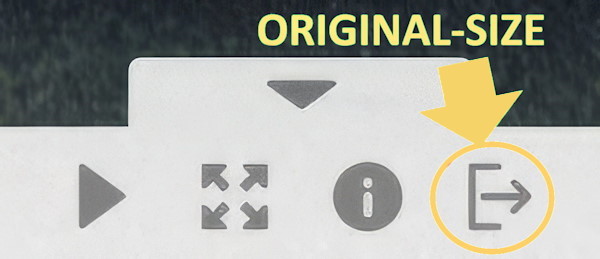
Slideshow | Fullscreen | Image-Info | Original-size
The photos with the number 07946, 07962 and 07964 show the wooden yacht “Albatros”.
In 1905, the Russian Tsar Nicholas II donated this sailing yacht to the Württemberg King Wilhelm II. Until 1918, it sailed under the royal flag on Lake Constance as “Skidbladnir”. Heinrich Seidl, the founder of the first inland sailing school in Germany, acquired the yacht in 1936 and made it the flagship of the Ammersee sailing school with its new name “Albatros”.
Photos of this sail in 2020 with Three Men in a Boat (To say nothing of the Bokeh with modern Viltrox and Canon lenses)
In 2020, the “heavyweight glass and steel” Viltrox 85mm f1.8 lens and the probably most-sold lens for digital single-lens reflex cameras in the world, the Canon EF 50mm f1.8 STM were used to shoot following photos. The Canon EF lens was adapted to the Sony a7ii by a Comlite EF to e-mount Adapter. Both lenses are known for its perfect creamy bokeh.
Sleeping Beauty Altschwabing
Only a few days after the boat trip, the swift beauty Altschwabing gets her deserved hibernation after overtaking so many plastic sailboats (also named yoghurt cups) this summer.
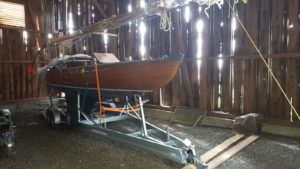
BBC’s TV series “Three Men in a Boat” from 2006 and 2011
Besides the 1889 novel, Three Men in a Boat has been made into a funny television comedy / documentary series by BBC starring comedians Dara Ó Briain, Rory McGrath and Griff Rhys Jones, first aired in 2006. In this first episode, the three participants rowed in a replica wooden skiff from Kingston upon Thames to Oxford. The documentary also shows the history of boat trips on the upper Thames, including how the locks on the Thames river could get quite overcrowded one year after the popular book Three Men in a Boat was published and printed in high numbers.
In fond memories of
Siemens TI
(Technology & Innovations)
Great yourney, great story! Congratulations!
Super Bilder! Von der Altschwabing gibt’s schon gute Fotos, aber hier sind noch einige dazu gekommen. Danke Chris
Klaus-Jürgen